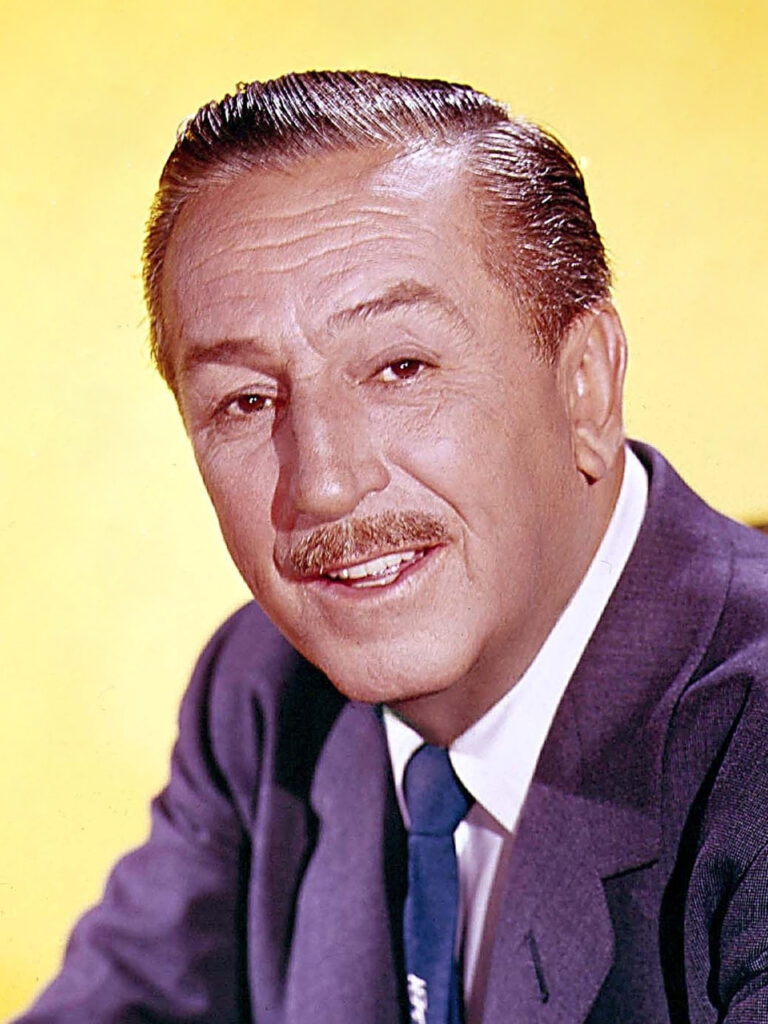Walt Disney was born in Chicago, Illinois, but his family moved to Kansas City, Missouri when he was 10. After serving in the Red Cross in France at the end of World War I, Disney returned to Kansas City to pursue his dream of becoming a professional artist. In 1923, he and his brother, Roy, moved to Hollywood, California and founded Disney Brothers’ Studio.
After achieving limited success with “silent” cartoons, Disney produced Steamboat Willie in 1928, the first cartoon with synchronized sound. The short starred a new character known as Mickey Mouse with Walt providing the voice. Soon Mickey and his creator would become two of the most famous figures in the world. In 1932, Disney would receive the first of his 22 Academy Awards, a record that has yet to be broken.
Among many interests, Walt Disney was fascinated with outer space and its exploration. In the 1950s he teamed with Wernher von Braun, the father of the V-2 rocket who then worked for the U.S. Army Ballistic Missile Agency, to produce three specials for television. Their shared goal was to build public support for the new American space program. The first, a live-action/animated film titled Man in Space, was broadcast in 1955. The critically acclaimed show garnered an astounding 42 million viewers or more than a quarter of the population of the United States at that time.
Later that year, Walt Disney and von Braun collaborated on Man and the Moon. Not only was it almost as successful as the first installment, Man and the Moon was accompanied by the publication of an educational brochure that was widely read in American schools. Mars and Beyond, the last in this series of what Disney called “science factual” programs, was broadcast in 1957. Many believe that these shows helped motivate President Eisenhower to continue funding the fledgling American space program.
As these broadcasts were airing, Disney was building his first amusement park (Disneyland) in Anaheim, California, which included a “Tomorrowland” with several space-oriented rides and attractions. This also helped to excite the public about space exploration. Disney died of lung cancer in Burbank, California on December 15, 1966. In 1980, his role in helping to put the space program into the mainstream of American culture was recognized by naming an asteroid, 4017 Disney, in his honor.

